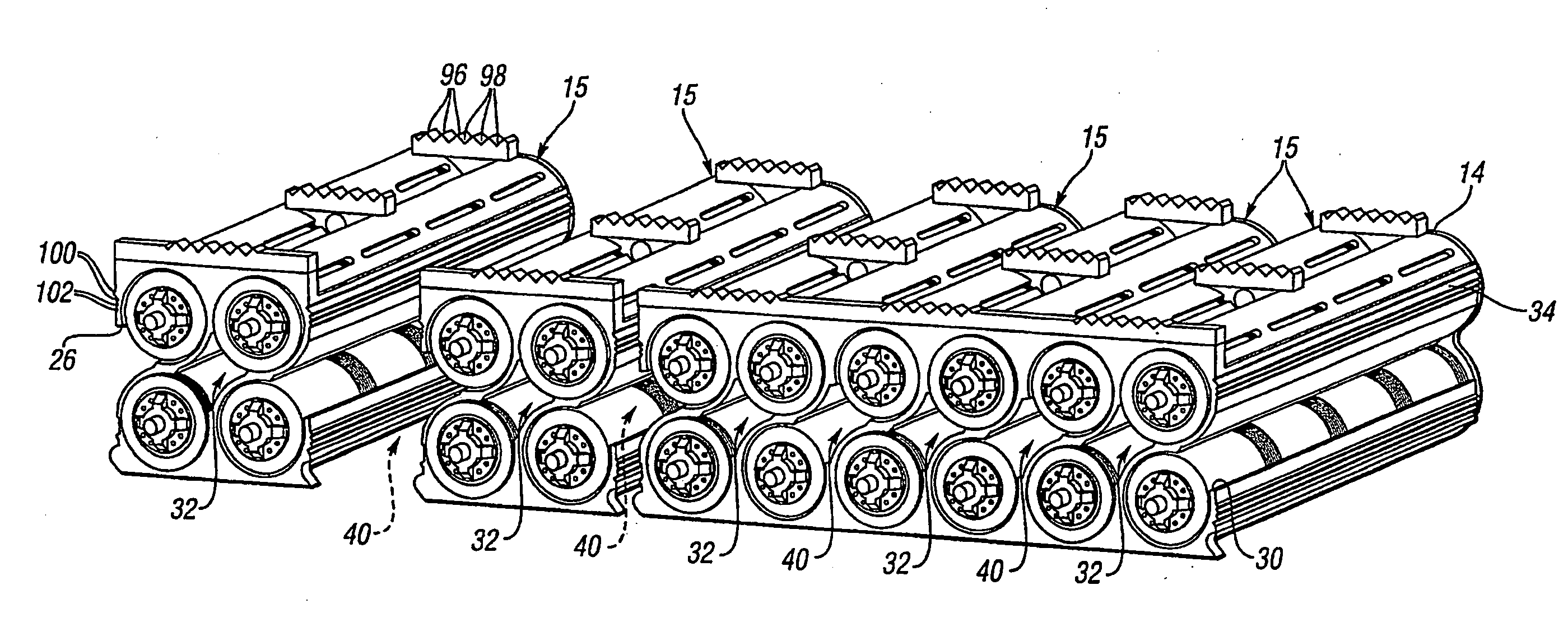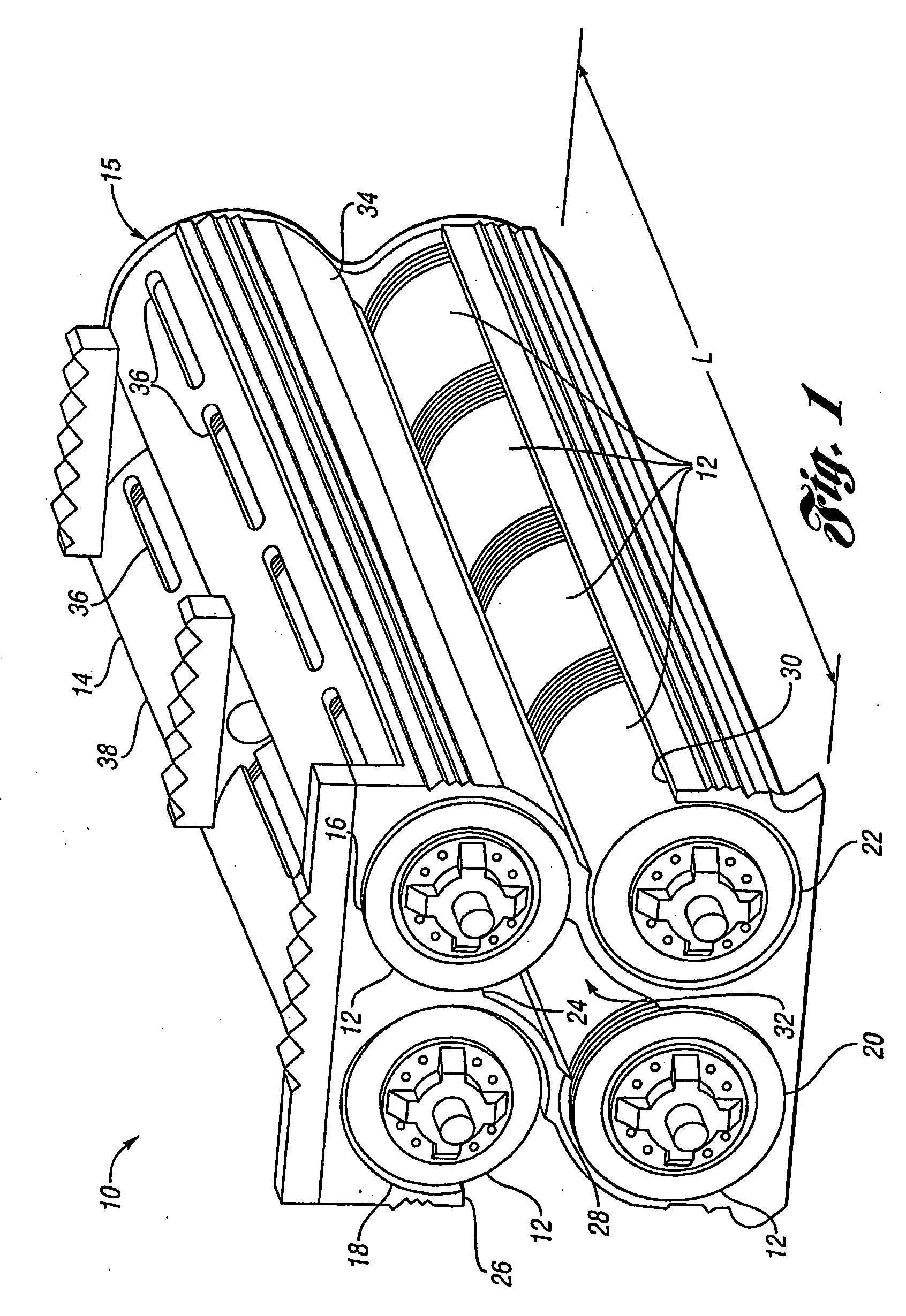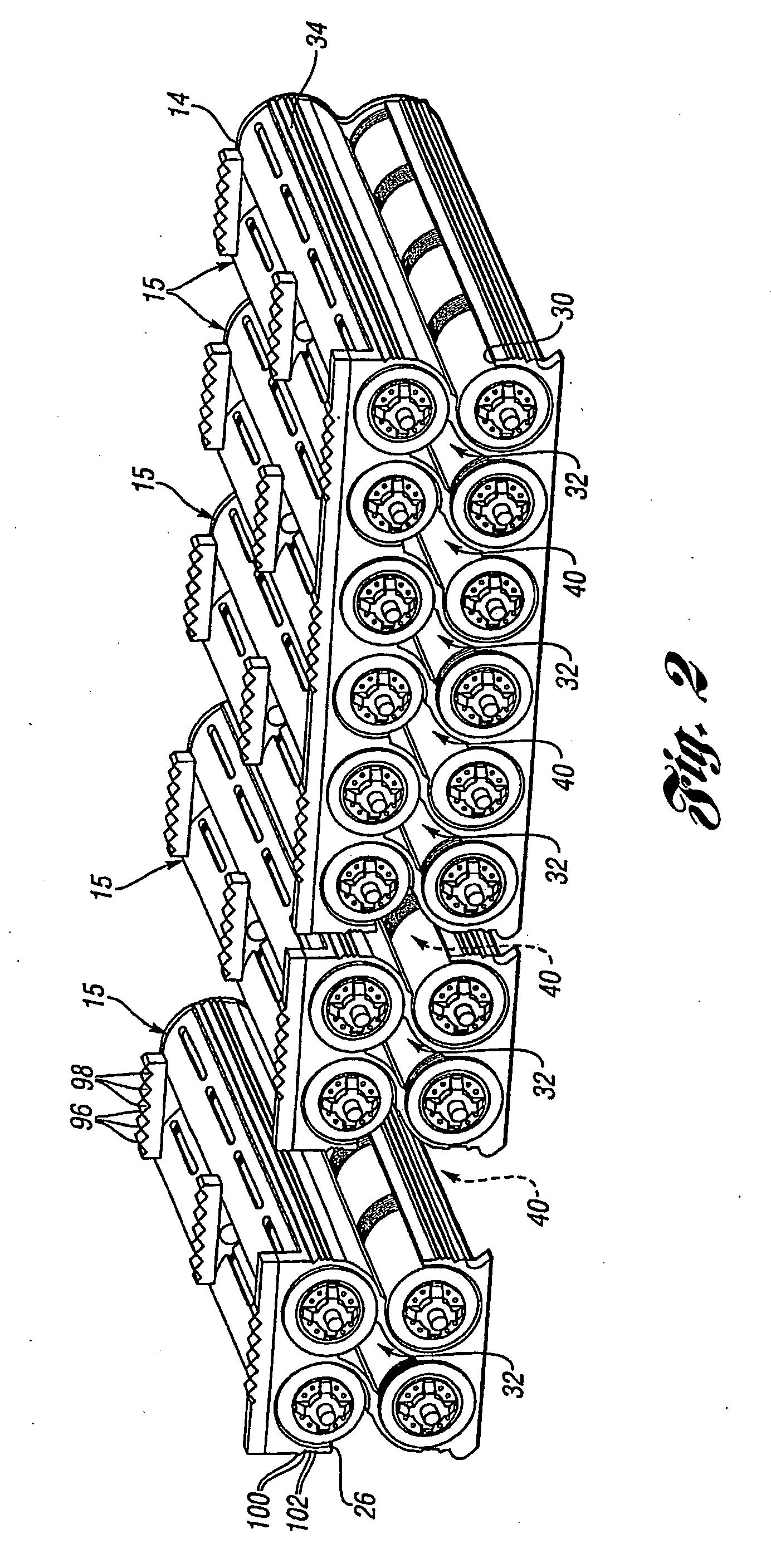Power supply system
a power supply system and power supply technology, applied in the direction of current conducting connection, cell components, safety/protection circuit, etc., can solve the problems of increasing the cost and weight of the battery assembly, the terminals of the batteries at the end of the rows are misaligned, and the length of each individual battery cell is too long, so as to achieve convenient stacked, low voltage, and the effect of a larger battery
- Summary
- Abstract
- Description
- Claims
- Application Information
AI Technical Summary
Benefits of technology
Problems solved by technology
Method used
Image
Examples
Embodiment Construction
)
[0050]FIG. 1 shows a power supply system 10 in accordance with one embodiment of the present invention. The power supply system includes a plurality of power supply units, or battery cells 12, arranged in a housing 14, thereby forming a brick 15. As shown in FIG. 1, the battery cells 12 are generally cylindrical, having a generally circular cross section. The housing 14 includes four generally tubular compartments 16, 18, 20, 22 configured to receive the battery cells 12.
[0051]As shown in FIG. 1, each of the compartments 16, 18, 20, 22 is arranged to receive four of the battery cells 12 configured in an end-to-end configuration. For convenience, a group of the battery cells 12 disposed in an end-to-end configuration may be conveniently referred to as a module. Although the housing 14 shown in FIG. 1 is configured to receive four battery modules, for a total of 16 of the battery cells 12, it is understood that the present invention includes housings capable of receiving a greater nu...
PUM
 Login to View More
Login to View More Abstract
Description
Claims
Application Information
 Login to View More
Login to View More - R&D
- Intellectual Property
- Life Sciences
- Materials
- Tech Scout
- Unparalleled Data Quality
- Higher Quality Content
- 60% Fewer Hallucinations
Browse by: Latest US Patents, China's latest patents, Technical Efficacy Thesaurus, Application Domain, Technology Topic, Popular Technical Reports.
© 2025 PatSnap. All rights reserved.Legal|Privacy policy|Modern Slavery Act Transparency Statement|Sitemap|About US| Contact US: help@patsnap.com



